Looking for a few great ways to attract hummingbirds and have them visit your backyard over and over again this summer?
Hummingbirds are truly one of the most fascinating birds of all to watch in action. The tiny little birds with exceptionally long beaks can beat their wings at an astonishing 80 beats per second. And, unlike most birds, they can fly in all directions, even backwards!
With their quick wing speed and furious flying action, they burn off a tremendous amount of calories each day. In fact, they need to eat at least half of their body weight every single day just to replenish the calories they use while flying about in search of food.
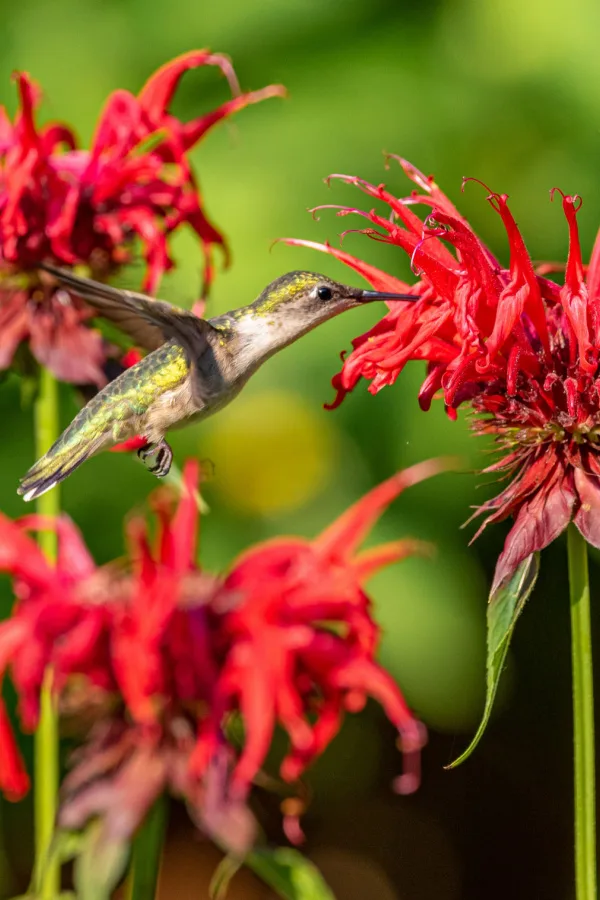
Because of that need and love of a constant food source, it can be quite easy to attract hummingbirds and keep them coming back – that is, as long as you can provide plenty of what they are looking for! And the best way to do that is with a two-prong approach of providing them with nectar from a feeder – and planting plenty of the flowers they love to visit and work for food!
How To Attract Hummingbirds And Keep Them Around
Although humming bird feeders are excellent for bringing hummingbirds around, when you add in at least a few of the flashy blooming plants they love – you give the hummingbirds more of a reason to stay nearby.
Hummingbirds love to feed on the sweet nectar of plants and flowers. And by providing both a feeder and plants, you can watch them fly from flower to feeder to flower in a constant buzz. When you consider they can visit thousands of flowers in one day, the double combination of plants and a feeder or two is a sure bet to have them sticking around!
And can it ever help your garden and flowerbeds! Since hummingbirds visit thousands of flowers each day, they can become a major pollinator. And that means more flowers, more vegetables – and more time to watch the fascinating birds fly around!
With that in mind, here is a look at some of the plants they love most – and a great homemade recipe for hummingbird syrup for your feeders!
Perennials & Annuals
The best way to draw hummingbirds to your yard is by growing plants hummingbirds like to feed from. Both annuals and perennials can persuade them to hang around your outdoor spaces.
But in addition to flowers, consider growing bushes and shrubs around your property. These are an important protector for hummingbirds. Not only do they give hummingbirds a safe place to escape if threatened – but also a space to rest. Even better, they often create nests there. Talk about keeping them close by!
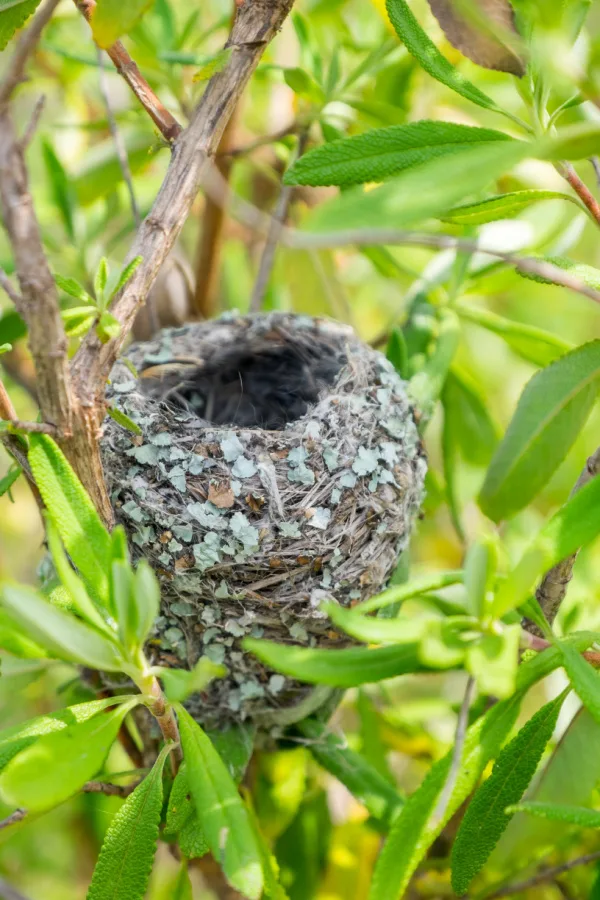
For flowers, choose varieties that feature bright colors and tubular-shaped blooms. Flower colors in reds and oranges are the ones hummingbirds will visit most. They also love and will visit purple, white, and pink blooms as well. Here are some of their favorite plants of all:
Bee Balm
This hardy perennial is native to North America and grows well in rich, moist soil. It features tall, spiky blooms in red, pink, purple, or white. Another bonus of bee balm is that it is deer-resistant. This attractive perennial is hardy in zones 3 through 9.
Its growth range depends on the variety you select. Some dwarf varieties grow to around only 10 inches while others grow all the way up to 4 feet tall.
Lupines
Lupines are herbaceous perennials that actually help to improve the soil as well as attract hummingbirds. In addition, lupines also can help you grow better. Since they are a member of the pea family, they help to fix nitrogen levels in the soil making it even better for your other plants to flower.
They feature long blooms with multiple tiny petals in purples and blues that are perfect for hummingbirds to feed from. Lupines are hardy in growing zones 4 through 8. They require loose, well-draining soil. Lupines can grow to anywhere between one to four feet tall.
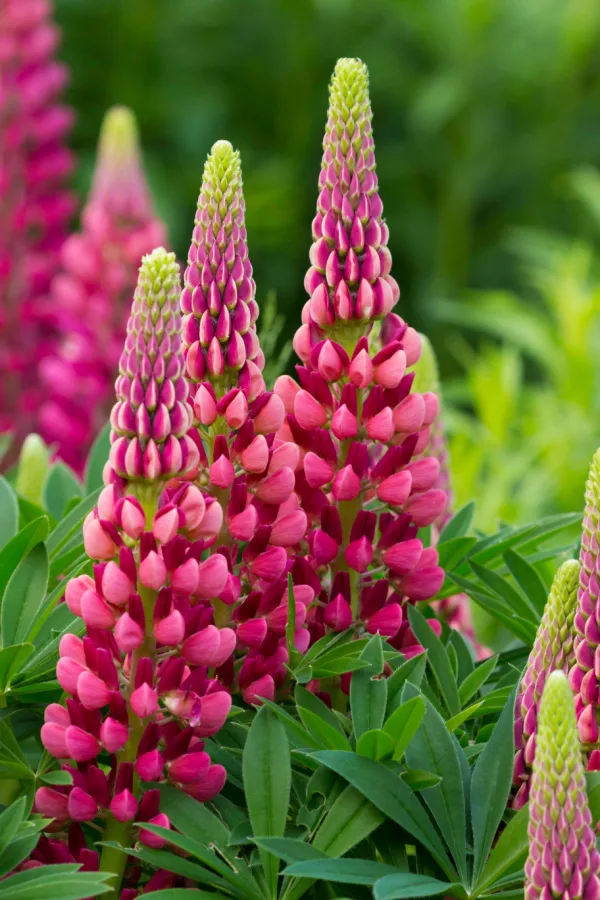
Phlox
Phlox is a flowering perennial that creates an almost blanket-like covering as well as tall garden varieties with small little star-shaped blooms. Their tiny flowers are available in red, pink, purple, blue, and white and draw in all sorts of different pollinators, including hummingbirds.
Some phlox varieties require full sun while others do quite well in full shade. Most require well-draining soil and they are deer resistant. Phlox blooms early in the season, and can get hummingbirds visiting right off the bat!
Petunias
These well-loved annual flowers are perfect for attracting hummingbirds. Their open, plentiful blooms are the perfect shape for hummingbirds to easily access the nectar within. In addition, petunias keep on blooming from spring all the way until fall.
They feature blooms in almost any pattern and color, and hummingbirds love them. You can grow petunias in-ground or also in hanging baskets and containers. Place a hanging basket of them with 30 feet of your feeder and watch the magic happen!
Impatiens
If you need a flowering annual for the shadier locations on your property, then impatiens are the perfect flower. They feature hundreds of small blooms in almost any color imaginable.
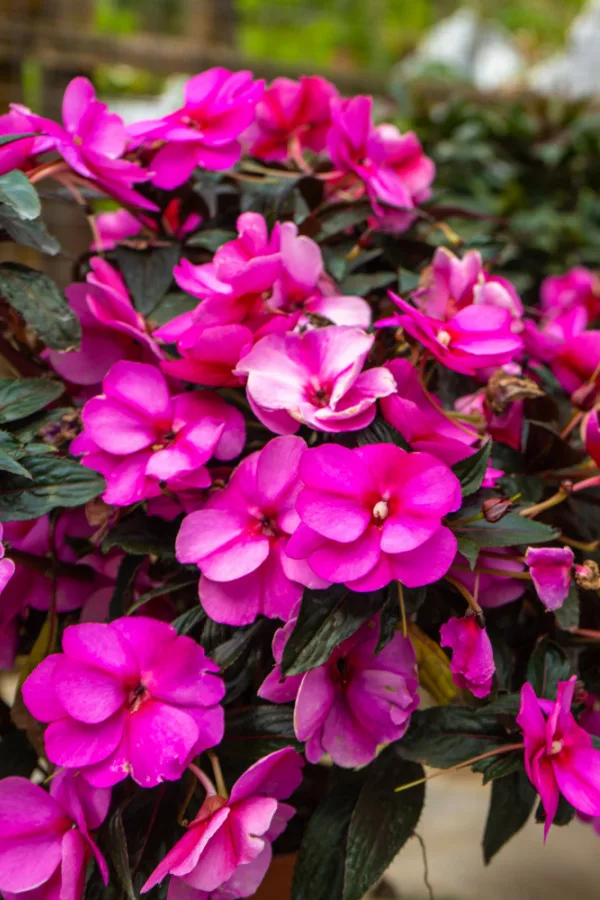
IYou can grow impatiens directly in the ground or in hanging baskets and containers. Front porches, shady decks, or even under the canopy of trees are perfect places for growing impatiens – and for attracting hummingbirds.
Not only does it allow them to work flowers out of the hot sun – these areas offer more protection against predators of hummingbirds. To learn how to care for container impatiens and keep them blooming strong, check out our article “How To Keep Impatiens Flowering”.
Homemade Nectar – How To Attract Hummingbirds
Another way to attract hummingbirds to your property is to create your own homemade nectar. You can purchase feeders that are specifically made for containing homemade hummingbird nectar.
This simple recipe is easy to make, and does it ever work! It consists of one part of sugar for every four parts of water. Simply mix one cup of refined sugar with four cups of lukewarm water and stir until dissolved.
Do not use red dyes in your hummingbird nectar. It isn’t needed to attract them to your feeders and it can actually harm them. Most feeders are painted red, and that is enough to attract the birds in the first place. Product Affiliate Link: More Birds Red Jewel Hummingbird Feeder, Glass Hummingbird Feeder
Be sure to replace the mixture every couple of days and disinfect the feeders well. This is especially important during really hot summer spells.
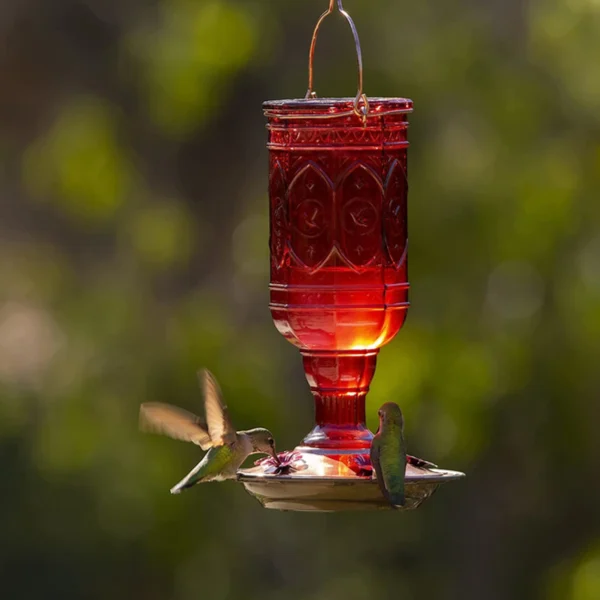
Additional Feeder Tips
If your hummingbirds seem to be fighting for feeders, set out more than one feeder. Hummingbirds, especially males, tend to be rather territorial and can chase one another away. If that doesn’t help, move the feeders so they are at least 15 feet apart, preferably out of sight of one another.
Provide Water – How To Attract Hummingbirds
Hummingbirds like to keep their feathers clean and remove any sticky residue from nectar. If you are using a bird bath, ensure that the water isn’t too deep or there are rocks or other perches for them to rest on.
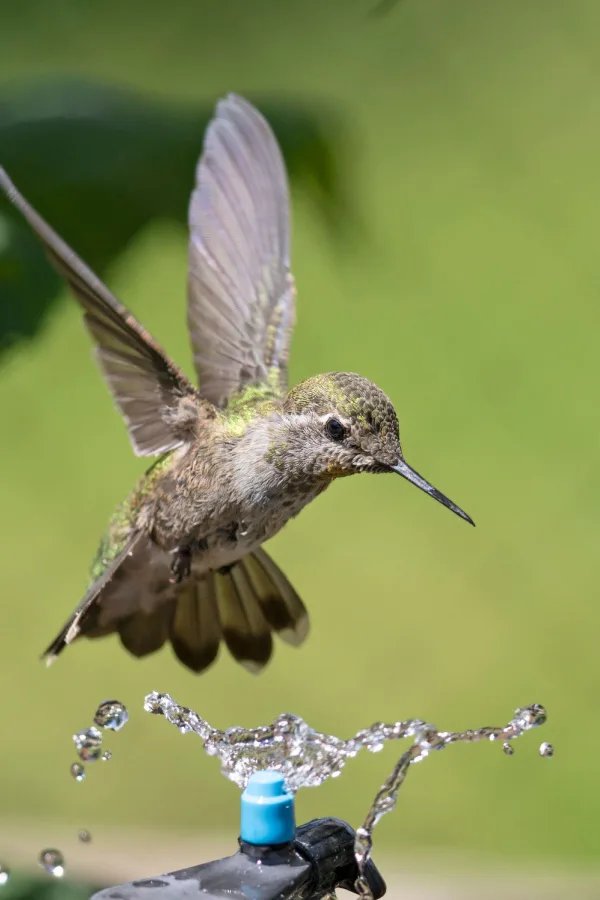
While stationary bird baths do work, hummingbirds actually prefer moving water. Consider adding misters, sprinklers, or fountains nearby your hummingbird food sources. They will often fly directly through water sprays or hover in light mists for an on-the-go bath.
Once hummingbirds decide to make your property their home, they tend to return to the same spot year after year – giving you not only entertainment but also helping to pollinate your plants each year!
Follow Our Facebook Page For Even More Great Tips! Simple Garden Life Facebook Page
Simple Garden Life is a website dedicated to keeping gardening fun, simple and enjoyable! We publish two new articles each week along with a new garden podcast episode every two weeks. This article may contain affiliate links.
